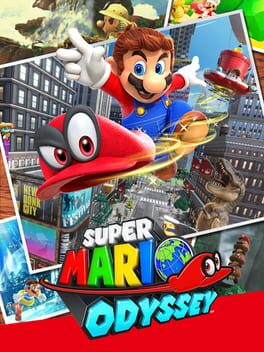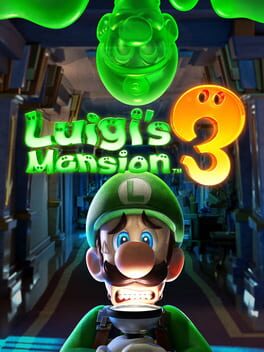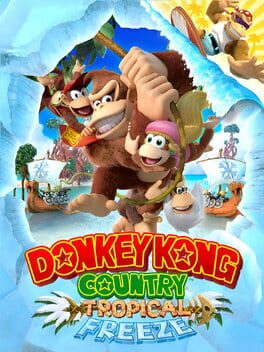tomdink
Favorite Games
039
Total Games Played
000
Played in 2024
000
Games Backloggd
Recently Reviewed See More
The Legend of Zelda: Breath of the Wild feels like a direct acknowledgement from Nintendo that their releases as of late have become too linear and hold the players hand far too often; and the result is the largest shake up of the Zelda formula to date—one absolutely worth the near 6-year wait.
Giving Link his four Sheikah Slate Rune abilities in the starting area of the game, The Great Plateau, right off the bat means that every puzzle encountered in the wild can be solved at any point in the game. Shrines serve as miniature dungeons scattered all across Hyrule, and successfully translate the intricate puzzle solving and more linear design of previous games into a bit sized format. Almost no feeling in any other game evokes such wonder and excitement as does the feeling of climbing a Sheikah Tower, noting four Ancient Shrines way off in the distance, and jumping off from your high vantage point using your Paraglider to sail above the land. Using the rewards from these Shrines, Spirit Orbs, to upgrade Links health and stamina is a great gameplay loop that really makes you feel more powerful—and with every visit to the Goddess Statue to receive these rewards, Link gains an upper hand against Calamity Ganon; the final boss who can be accessed at any point in your adventure. Few games truly capture the sense of wonder, joy of exploration, and excitement of discovery like The Legend of Zelda: Breath of the Wild.
Giving Link his four Sheikah Slate Rune abilities in the starting area of the game, The Great Plateau, right off the bat means that every puzzle encountered in the wild can be solved at any point in the game. Shrines serve as miniature dungeons scattered all across Hyrule, and successfully translate the intricate puzzle solving and more linear design of previous games into a bit sized format. Almost no feeling in any other game evokes such wonder and excitement as does the feeling of climbing a Sheikah Tower, noting four Ancient Shrines way off in the distance, and jumping off from your high vantage point using your Paraglider to sail above the land. Using the rewards from these Shrines, Spirit Orbs, to upgrade Links health and stamina is a great gameplay loop that really makes you feel more powerful—and with every visit to the Goddess Statue to receive these rewards, Link gains an upper hand against Calamity Ganon; the final boss who can be accessed at any point in your adventure. Few games truly capture the sense of wonder, joy of exploration, and excitement of discovery like The Legend of Zelda: Breath of the Wild.
Super Mario Odyssey is a remarkable showcase of Nintendo’s unique ability to craft beautiful, intriguing, open, and sprawling landscapes for our favorite acrobatic plumber that are more fun to explore than any of his prior locales to date. The introduction of sub-areas, which represent an increasing pattern at Nintendo in making small, mini-puzzles that are discoverable in an open world as we saw with Breath of the Wild’s shrines, are the perfect reward for exploring Odyssey’s open-sandbox Kingdoms. Power Moons are rewarded to players for the completion of a sub-area and the exploration of a Kingdom, and they grant Mario access to new and wildly diverse Kingdoms; thus creating one of the most effective motivations for exploration in a Nintendo game. Almost every Moon in the game can be collected out of order as well, returning Mario to a feeling of freedom not seen since Mario 64.
At center stage this time around is Cappy, a new sidekick character who lives in Mario’s famous hat, granting him new mobility options that take an already acrobatic handyman and transform him into an elite, Olympic-class gymnast. A video game icon present since his very first outing in 1981, Mario’s Hat not only looks stylish but has been repurposed for an actual game function, begging the question; “How has it taken Nintendo nearly 40 years to think of this idea?”. Returning are Mario’s staple 3D moves such as the backflip and long jump, but this time around Mario can fling his hat in a variety of ways that increase his platforming abilities exponentially. Long jump, throw your hat, dive into the hat and bounce off, throw Cappy yet again, dive once more, and you’ve crossed the gap between two skyscrapers in New Donk City. It’s never felt this good to control Mario. And if this wasn’t impressive enough, throw Cappy onto an enemy or object to “Capture” it. This mechanic finally allows Mario to be a Goomba, and provides for a new wealth of platforming and puzzle solving variety.
At center stage this time around is Cappy, a new sidekick character who lives in Mario’s famous hat, granting him new mobility options that take an already acrobatic handyman and transform him into an elite, Olympic-class gymnast. A video game icon present since his very first outing in 1981, Mario’s Hat not only looks stylish but has been repurposed for an actual game function, begging the question; “How has it taken Nintendo nearly 40 years to think of this idea?”. Returning are Mario’s staple 3D moves such as the backflip and long jump, but this time around Mario can fling his hat in a variety of ways that increase his platforming abilities exponentially. Long jump, throw your hat, dive into the hat and bounce off, throw Cappy yet again, dive once more, and you’ve crossed the gap between two skyscrapers in New Donk City. It’s never felt this good to control Mario. And if this wasn’t impressive enough, throw Cappy onto an enemy or object to “Capture” it. This mechanic finally allows Mario to be a Goomba, and provides for a new wealth of platforming and puzzle solving variety.
The Legend of Zelda: Tears of the Kingdom proves that a sequel can surpass its source material. Providing a huge amount of freedom to the player at nearly every turn, TOTK is a shining example of Nintendo’s mastery of the sandbox open world, showcasing a unique crafting system that allows the player to attach nearly any object to another. While the reintroduction of Sky Islands may leave Wind Waker fans disappointed that Nintendo once again opted out of building a majority of the games unique content in the sky, the new high-quality shrines, unique dungeons & bosses, brand new uses for preexisting Breath of the Wild items, and world-opening crafting system more than make up for this tease.
This time around, Link’s abilities interplay with each other to create a new kind of Zelda experience; one in which no Beyblade Spinner feels sidelined, and every one feels uniquely useful. Fuse a Bokoblin horn to a tree branch to make a sword. Craft a flying machine using the new Zonai devices with Ultrahand, and lift it in the air. Reverse its position with Recall, and fly upward and on top of the craft with Ascend. Breath of the Wild’s abilities walked so Tears of the Kingom’s could run; every ability feels like a marked improvement over its BOTW predecessor.
This time around, Link’s abilities interplay with each other to create a new kind of Zelda experience; one in which no Beyblade Spinner feels sidelined, and every one feels uniquely useful. Fuse a Bokoblin horn to a tree branch to make a sword. Craft a flying machine using the new Zonai devices with Ultrahand, and lift it in the air. Reverse its position with Recall, and fly upward and on top of the craft with Ascend. Breath of the Wild’s abilities walked so Tears of the Kingom’s could run; every ability feels like a marked improvement over its BOTW predecessor.





